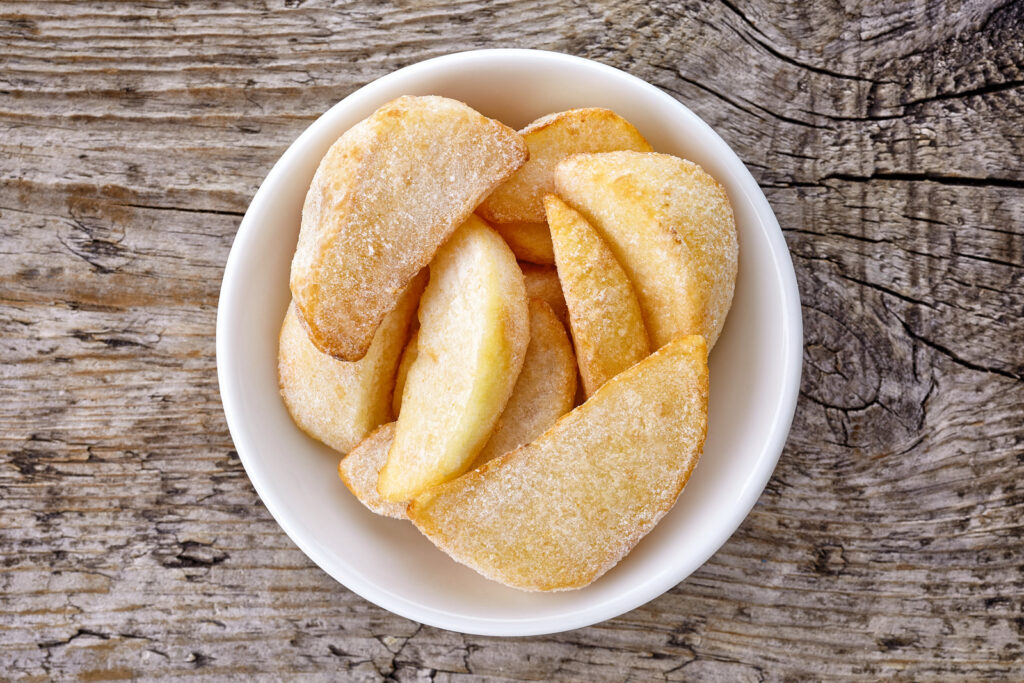Sharing is caring!
Potato starch levels play a crucial role in determining how potatoes cook and taste. High-starch varieties produce fluffy, dry textures ideal for baking or mashing, while low-starch, waxy potatoes hold their shape well for boiling, roasting, or salads. After decades of growing potatoes, I’ve learned that understanding starch content helps gardeners and cooks select the best potato for each purpose.

Why Starch Levels Matter
- High-starch potatoes (floury): Examples include Russets and Yukon Gold. Great for mashed potatoes, baking, and fries. They absorb flavors well and become light and fluffy.
- Medium-starch potatoes: Good all-purpose potatoes for roasting and boiling.
- Low-starch potatoes (waxy): Examples include Red Norland or fingerlings. Hold shape when boiled or in salads; less likely to fall apart.
Knowing the starch level allows you to match potato varieties to recipes and ensures consistent results.
How to Test Potato Starch Levels
1. The Water Test
- Peel a potato and cut it into cubes.
- Place the cubes in a clear glass of water.
- Observe:
- High-starch potatoes: Water becomes cloudy due to starch release.
- Low-starch potatoes: Water remains mostly clear.
2. The Cooking Test
- Boil small pieces of potato.
- Check texture after cooking:
- Fluffy and falling apart: High-starch.
- Firm and smooth: Low-starch.
3. Professional Methods (Optional)
- Refractometer or starch meters: Used by commercial growers to measure precise starch content.
Gardener & Cook Tip:
In my experience, testing starch is especially helpful when growing multiple varieties in the same garden. It helps decide which potatoes are best for mashing, roasting, or making fries. This step ensures you get consistent texture and flavor from your harvest.
Potato Starch Level Chart
| Starch Level | Common Varieties | Cooking Uses | Key Characteristics |
|---|---|---|---|
| High-Starch (Floury) | Russet, Yukon Gold | Baking, mashing, French fries | Fluffy, dry texture; absorbs flavors well |
| Medium-Starch (All-Purpose) | Kennebec, Red Pontiac | Roasting, boiling, everyday use | Balanced texture; versatile for multiple recipes |
| Low-Starch (Waxy) | Red Norland, Fingerlings, New Potatoes | Boiling, salads, stews | Holds shape; smooth and firm; less likely to fall apart |
Gardener & Cook Tip:
- Use high-starch potatoes for creamy mashed potatoes or fries.
- Low-starch potatoes are ideal for salads or dishes where shape matters.
- Testing starch levels ensures the right potato is matched to each recipe for consistent results.


